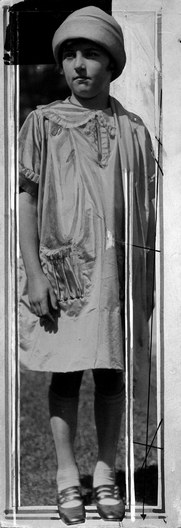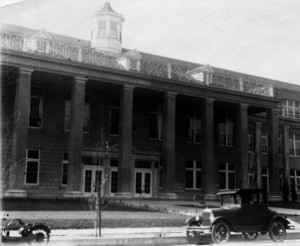It had taken less than two years for Aggie Underwood to work her way up from switchboard operator at the Los Angeles Daily Record, to part-time assistant for one of the paper’s columnists, Gertrude Price (who wrote the Cynthia Grey column).
On December 15, 1927, just a couple of days away from Aggie’s twenty-fifth birthday, she was working in the newsroom when reporters learned that twelve year old Marion Parker, the daughter of Perry Parker a prominent banker, had been abducted from her school. Marion’s twin sister Marjorie had not been taken.
The kidnapper had arrived at Mount Vernon Junior High School where the twins were students and gone directly to the office of Mary Holt, the school’s registrar. The young man told her that Perry Parker had been seriously injured in an automobile accident and was calling for his youngest daughter. Times were different then. Holt never even asked the man for his identification, nor did she ask him what he meant by youngest daughter since Marion and Marjorie were twins and presumably separated in age by mere minutes.
Any moment of doubt that Mary Holt may have had before releasing Marion into the custody of a maniac (who didn’t look maniacal at all) was overcome when the man insisted that he was an employee at Parker’s bank. When she was questioned later, Holt said the man had seemed sincere. He had been quick to suggest that if Holt doubted his word, she should phone the bank. If only she had.
Instead of phoning the bank for verification of the stranger’s story, Holt dispatched an office assistant to fetch Marion from class. The children were in the midst of a Christmas party when the assistant delivered the news of Perry Parker’s accident. Marion didn’t hesitate; she accompanied the assistant to the registrar’s office where she was led away by the stranger.
Witnesses would later recall that the man helped Marion into his coupe and “…patted her reassuringly on the shoulder”. As Marion’s friends watched the coupe drive away they had no idea that they were witnessing a kidnapping, or that the abduction would result in one of the most heinous murders in the city’s history.
Once it had been determined that Marion had been kidnapped, terror and helplessness replaced calm and security in the Parker family home. They could not name a single enemy. The Parkers were prepared to meet any ransom demand, they simply longed for word that Marion was unharmed.
LAPD, the LA County Sheriff, and the District Attorney’s office put all available men into the search for Marion. At that time it was the largest single manhunt in the city’s history. The scope of the search would not be eclipsed until 1947 when LAPD conducted a massive search for the killer of twenty-two year old Elizabeth Short, the Black Dahlia.
NEXT TIME, THE HUNT FOR THE FOX.



